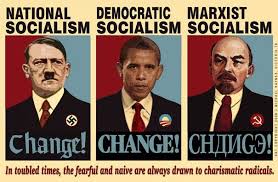The following are excerpts from http://www.founderspatriots.org/articles/continental.htm
NOT WORTH A CONTINENTAL

Continental Currency was printed in a variety of denominations, this piece being valued at "Eighty Dollars." It was produced by Hall and Sellers of Philadelphia in 1779. Note the intricate designs on both sides, which was done hopefully to discourage counterfeiting.
Treasurer General Thomas P. Curtis relates how the Founding Fathers, with little gold or silver on hand, turned to printing paper money — with disastrous results.
Also, if truth be known, not many understood the reason for the depreciation. As one patriotic old lady remarked in 1777, "What a shame it is, the Congress should let the poor soldiers suffer when they have power to make just as much money as they choose." Many people still think that way today. Rather than grasp the simple fact that if you double the money supply you will reduce its value accordingly, they tend to blame the merchants for raising prices, the natural result of a depreciation of the value of the money.
The sad tale of the Continental Currency thereafter was one of more and more rapid depreciation. As the value of the Continentals dropped, Congress had to print more of them — and as more money flooded the countryside, its value dropped even more rapidly. In November of 1776, $19 million had been issued and one could still buy $1.00 worth of goods for $1.00 in paper. By November of 1778, $31 million had been issued, and it took $6.00 in paper to buy the same amount. By November, 1779 $226 million was in circulation and it took $40.00 in paper to buy $1.00 in goods. After that, it was all down hill. In April 1779, George Washington complained, "A wagon load of money will scarcely purchase a wagon load of provisions."
Anyone who has studied the period of the American Revolution and the difficulties facing those who fought for independence knows that one of the major problems was that of finance.
Indeed, this has always been a major problem for governments engaged in a lengthy war and it continues to plague us to this day. There are a variety of answers that have been tried throughout the centuries. A government can tax its citizens (a direct and rather painful way of raising funds.) It can borrow money from both its citizens and other nations. Or it can just print more money. The last recourse almost always leads to inflation, but seems to be the least objected to in the short term. Almost all governments have resorted to this expedient.
Indeed, this has always been a major problem for governments engaged in a lengthy war and it continues to plague us to this day. There are a variety of answers that have been tried throughout the centuries. A government can tax its citizens (a direct and rather painful way of raising funds.) It can borrow money from both its citizens and other nations. Or it can just print more money. The last recourse almost always leads to inflation, but seems to be the least objected to in the short term. Almost all governments have resorted to this expedient.

This "Eight Dollars" currency was printed by Hall and Sellers in 1776.

 Oldies
Oldies
 Harrolds.Blogspot.com
Harrolds.Blogspot.com












 Legislation Pending in Congress
Legislation Pending in Congress







No comments:
Post a Comment
Please, avoid posting advertisements. Content comments are welcomed, including anonymous. Posts with profanity will not be published.